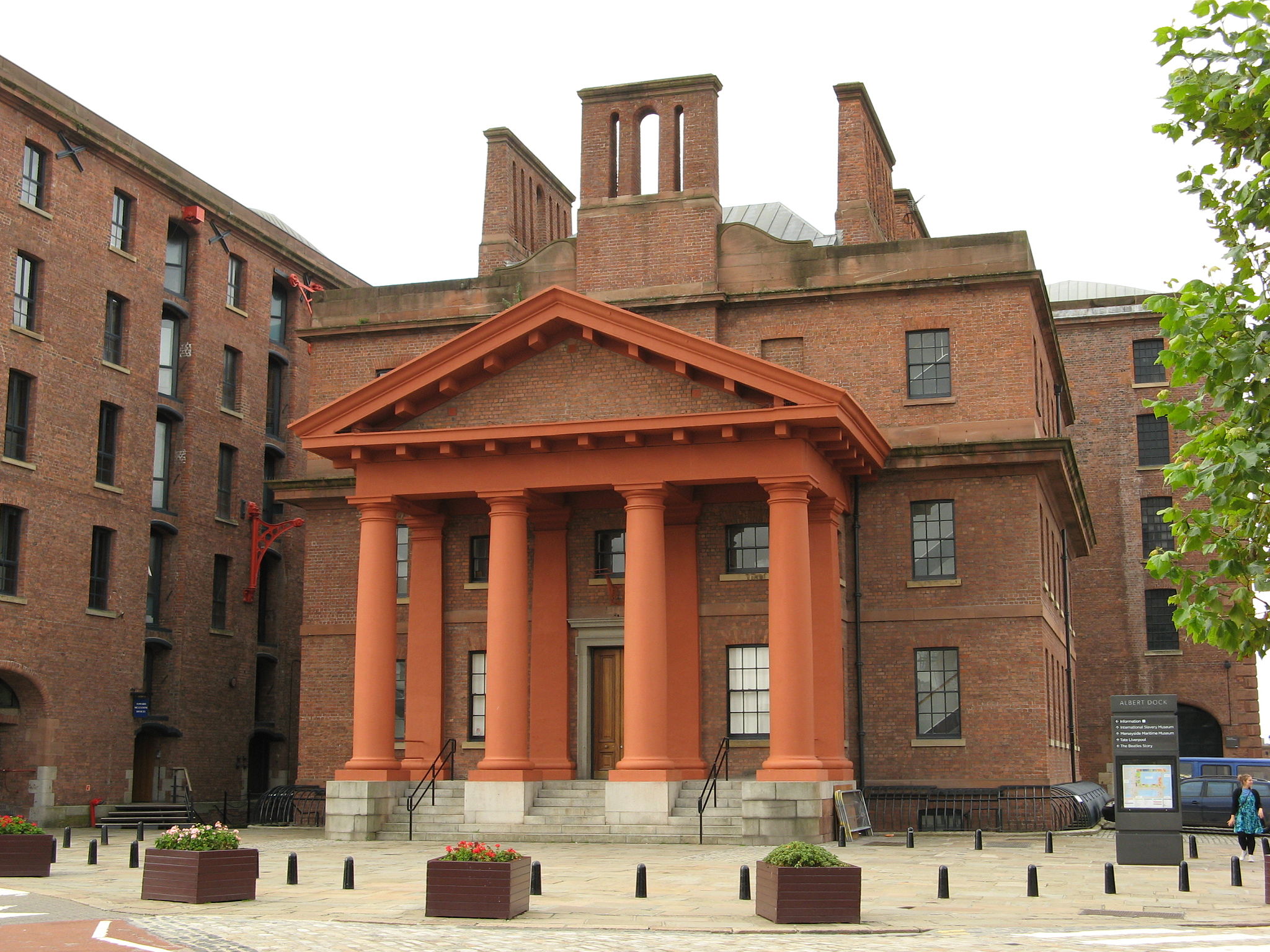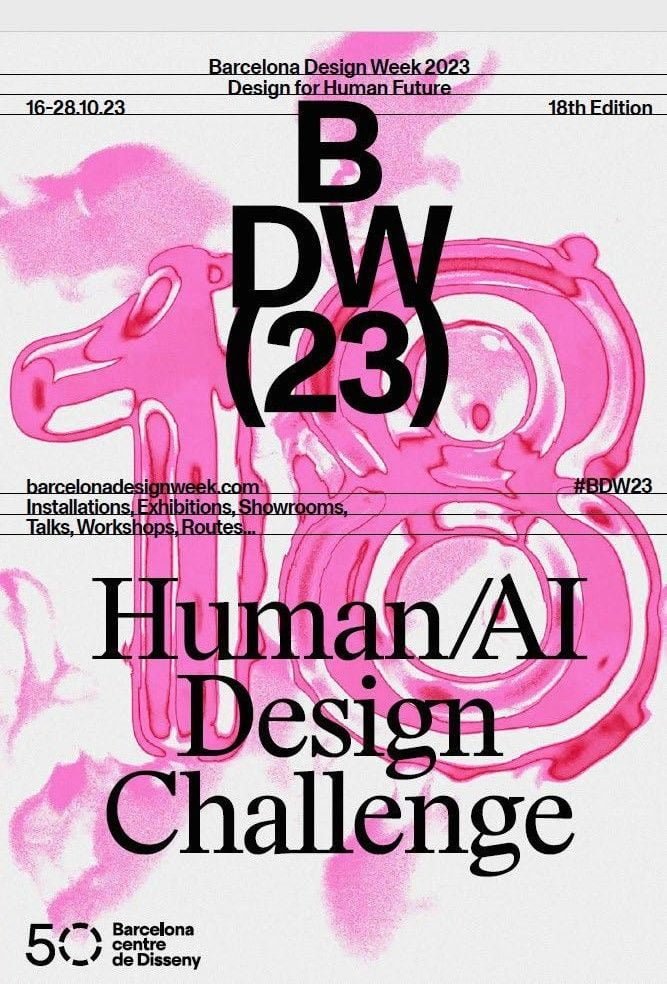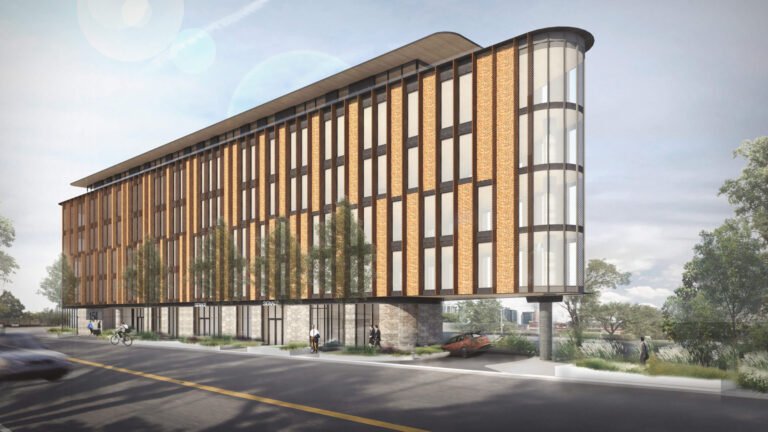Adjaye Associates tapped for “radical and brave” redesign of Liverpool’s International Slavery Museum and Maritime Museum
Adjaye Associates and lauded exhibition design practice Ralph Appelbaum Associates have been selected to lead a roughly $69 million planned revamp of both the International Slavery Museum and the Maritime Museum at Royal Albert Dock in the English port city of Liverpool. Both waterfront institutions are operated by National Museums Liverpool (NML).
The Adjaye and Appelbaum Associates team won the commission out of competition, beating three other shortlisted teams comprised of Haworth Tompkins with JA Projects, Fielden Clegg Bradley Studios, and heneghen peng architects with DROO Architects. NML formally launched the competition, one that sought out “radical and brave” design proposals from collaborative teams, in January of this year.
In a statement released by the NML and shared by The Architects’ Journal, David Adjaye relayed that he was “humbled” to lead the renovation of the museums. “This project presents us with an opportunity to reimagine the historic fabric of this Grade I-listed building and to reposition it within the powerful context of Liverpool’s Waterfront and its relationship to the transatlantic slave trade,” he said.
The Grade I-listed building in question is the Hartley Pavilion, a historic warehouse that currently houses both museums, with the International Slave Museum located on the building’s third floor. The Maritime Museum first fully opened in 1984 while the International Slavery Museum opened its doors within its older sister institution on August 23, 2007, to coincide with both Slavery Remembrance Day and the bicentenary of the abolition of the British slave trade. Although late to enter, Liverpool quickly grew to be capital of the European slave trade in the late 18th century. As noted by the museum, ships passing in and out of Liverpool’s bustling port transported nearly 1.5 million enslaved African people across the Atlantic—more than 10 percent of all known slaves transported by Europeans to the Americas and Caribbean.
In addition to an extensive renovation of the Hartley Pavilion, which will focus on enhancing exhibition areas, improving circulation and creating new guest amenities, the neighboring Martin Luther King, Jr. Building (also Grade I-listed) will be connected to the existing museum complex building via pedestrian bridge as part of the revamp. As previously reported by AN, the mid-19th century building, formerly known as the Albert Dock Traffic Office, is located directly adjacent to the International Slavery Museum and was converted into an auxiliary exhibition space for the museum following its acquisition by the NML in 2008. Prior to its ownership by the NML, the Phillip Hardwick-designed structure, which features a prominent Tuscan portico, was home to Granada Television.
The fully redeveloped building “will be at the very heart of the reinvigorated International Slavery Museum” complete with a “dramatic new front door” that will lead museum visitors “to spaces to explore and investigate the transatlantic slave trade and legacies,” explained the organization in a previous statement announcing its larger Canning Dock Project.

“Creating more gallery space, new and much-needed exhibition spaces, and places for people to connect, reflect and celebrate, the project will set the foundation for the integration of Black heritage in all of our National Museums Liverpool’s venues’ collections,” added the NML of its expansion into the adjacent Martin Luther King, Jr. Building.
A major element of the Waterfront Transformation Project, the Canning Dock Project focuses on revitalizing an area of Liverpool’s (UNESCO World Heritage Site-delisted) waterfront stretching between Royal Albert Dock and Mann Island that was used in the 18th century to repair and clean ships transporting slaves. As announced by NML in September of last year, a multidisciplinary team comprised of the eponymous architectural studio of Asif Khan in collaboration with Adjaye, Nigerien architect Mariam Kamara, and Chicago-based social practice artist and educator Theaster Gates will lead a dramatic, placemaking-focused transformation of the Canning Dock area.
NML director Laura Pye remarked on the selection of Adjaye Associates and Ralph Appelbaum Associates to lead the museum overhaul: “To be bringing two such visionary designers with international reputations to the project represents the bold ambition and thinking behind it. We are delighted they’re keen to embrace this as a co-production project which we feel will create something truly ground-breaking.”
“There has never been a more important time to address the legacies of the transatlantic slave trade and the redevelopment of the International Slavery Museum symbolises our, and our region’s commitment to confronting the significant role the city played in British imperialism.”
“Alongside the revitalisation of the Maritime Museum, which will bring a renewed focus on Liverpool’s rich maritime history and communities, and the wider Canning Dock development, the project will, create a holistic exploration of the heritage of the Liverpool waterfront, as well as a world class visitor experience,” she added.
In addition to the International Slavery Museum and Maritime Museum, other museums operated by NML include the 3XN-designed Museum of Liverpool, the Walker Art Gallery, and the World Museum, which is the oldest in the city, first opening in 1853.


